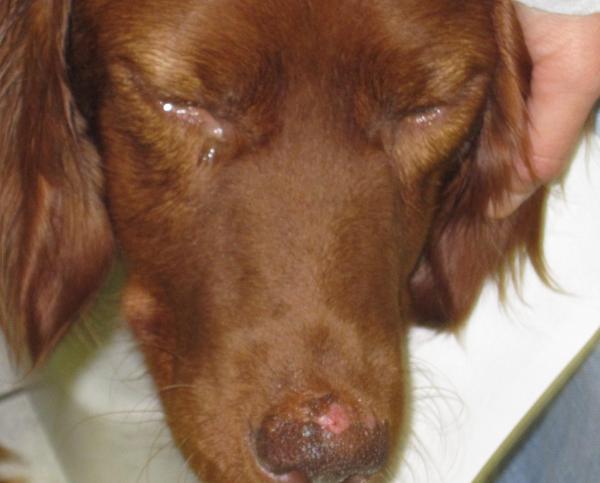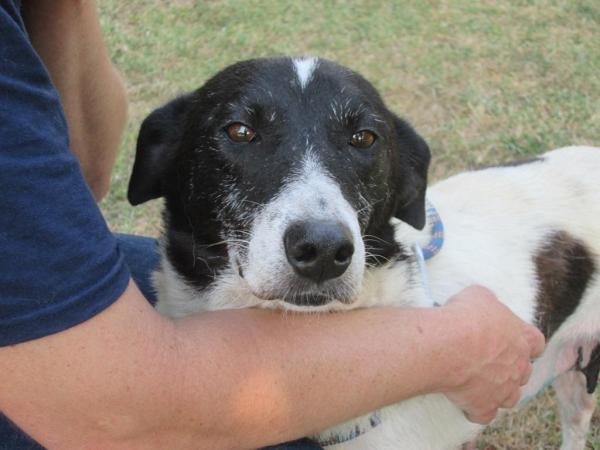Leishmaniasis In Dogs: Symptoms, Treatment, Life Expectancy



See files for Dogs
Leishmaniasis in dogs is a diseases caused by a protozan parasite( Leishmania). This leishmania is transmitted by a mosquito that feeds on blood. You can give your dog a leishmania vaccine to prevent the appearance of leishmaniasis in dogs. However, if your dog is already suffering from this disease, you may be wondering: How long does a dog with leishmaniasis live for? The life expectancy of this disease in dependent on the case itself. There are different stages of leishmaniasis[1].
If you want to know the symptoms of Canine leishmaniasis, it’s treatment and prevention, we can assure you you’ve come to the right place. Keep reading to find out everything you need to know about this parasite infection in dogs.
Leishmania in dogs: symptoms
Canine leishmaniasis is classified into two types: cutaneous leishmaniasis (affecting the skin) and visceral leishmaniasis (affecting the kidney and liver). In addition, there are other which link to this disease. However, these ‘other’ symptoms are less frequent.
One of the most common symptoms of leishmaniasis in dogs is a lack of appetite. There are other symptoms of leishmaniasis in dogs which can also help you identify whether your dog is suffering from the parasitic disease. leishmaniasis in dogs symptoms include:
Cutaneous leishmaniasis in dogs
- Exaggerated nail growth.
- Hair loss in various parts of your body, specifically around the nose, eyes and ears.
- Skin peeling.
- Infections, scabs and reddened areas on the skin.
- Hardened mucous membranes.
- Brittle textured, dry and opaque fur.
- Formation of ulcers on the skin, especially around a dog’s leg area.
- The appearance of nodules.
Visceral leishmaniasis in dogs
- Sudden weight loss.
- Kidney function alterations.
- Apathetic behavior.
- Loss of appetite.
- Fever.
- Anemia.
- Decrease in muscle mass.
- Abdominal swelling due to liver and spleen inflammation.
Other symptoms of canine leishmaniasis
- Chronic diarrhea.
- Coughing.
- Conjunctivitis.
- Nasal hemorrhages.
- Pneumonia.

What is leishmaniasis in dogs?
There are different types of leishmaniasis in dogs. These types are split over four different phases. Symptoms of Leishmaniasis vary depending on the phase with which the dog finds itself:
The different phases of leishmaniasis include:
- Stage I leishmaniasis: mild illness. Dogs with mild clinical signs, such as peripheral lymphadenopathy or papular dermatitis. They do not present clinico-pathological disorders and their antileishmania antibody score is calculated as negative or positive low. In this case, prognosis by a veterinarian in this phase is positive.
- Stage II leishmaniasis: moderate disease. In addition to the clinical signs mentioned above, dogs suffering from stage 2 leishmaniasis can present skin lesions (exfoliative dermatitis, ulcers, nodules), onychogyphosis, anorexia, weight loss, fever, diarrhea and epistaxis. The common clinical-pathological disorders consist of non-regenerative anemia and hyperproteinemia.
- Stage III leishmaniasis: serious illness. In addition to all the aforementioned points, this phase can present lesions caused by immunocomplexes, such as; vasculitis, arthritis, uveitis and glomerulonephritis. Clinico-pathological disorders will be the same than in stage II. The prognosis becomes more unfavorable, depending mainly on your dog’s renal function.
- Stage IV leishmaniasis: very serious disease. This fourth stage of leishmaniasis will present dogs with the clinical signs and injuries mentioned in section 3. These symptoms will include the presence of serious disorders such as thromboembolism, nephrotic syndrome or end-stage renal disease. The prognosis is unfavorable, and puts the dog at risk of death.
Leishmaniasis in dogs: life expectancy
Unfortunately, there the leishmaniasis life expectancy is not specific and we cannot give a clear answer to this question. As we pointed out in the previous section, prognosis varies according to the stage in which the disease is found.
If it is detected in stage I, the animal can maintain a good life along with appropriate treatment prescribed by a veterinarian. However, if you go to the specialist when the disease is already very advanced, there is very little chance of survival.
Having said that, it is necessary to know that leishmaniasis in dogs has no cure. Leishmaniasis treatment only aims to control its development and symptoms.
Parasite infection in dogs
You may be wondering how to help your dog with leishmaniasis. Well, helping a dog suffering from leishmaniasis requires heavy control of the disease, so that it does not develop. Here are some suggestions on how you can help a dog suffering from leishmaniasis:
- Follow your veterinarian’s instruction strictly. A professional will indicate the best treatment depending on your dog’s specific case and according to its magnitude.
- DO NOT neglect treatment. Although leishmaniasis treatment is is extensive and requires a strict monitored schedule, it is 100% necessary for your dog’s health and well-being.
- You need to remain aware and alert during and after your dog’s leishmaniasis treatment. This is necessary to monitor whether or not the disease is subsiding or progressing.
- Provide your dog with a high-quality diet, exercise and love.
Advanced leishmaniasis in dogs: treatment
The treatment of this disease is complex and has a long term administration. Medications provided by a vet should decrease symptoms and aid your dog in feeling better. Remember however, that eradicating the disease for ever, at the moment at least, is impossible.
The reason why being aware of these symptoms is so important, is that if detected early on, risks of suffering lessen. The more complex and progressed the disease, the more irreversible it becomes.
Therefore, if you notice any of the above symptoms, make sure to consult a veterinarian as soon as possible[2].

Leishmaniasis prevention dogs
Prevention is key when it comes to parasite infections in dogs. Leishmaniasis prevention includes:
- Avoid walks and outdoors during the evening, specifically in humid or warm areas. This is because evening or morning are when mosquitoes usually manifest.
- The product syrup, Leishguard, acts by stimulating your dog’s immunity. Therefore, many people opt to give their dog this syrup to prevent the appearance of leishmaniasis.
- Mosquito repellents for dogs help in preventing this disease. However, it is important to make sure, beforehand, that your canine is not allergic to the repellent.
- The Leishmaniasis vaccine in dogs is another option some people opt for. However, this parasite vaccine has not been 100% proven effective. This vaccine can only be provided by a veterinarian.
For more about canine disease prevention, we recommend taking a look at the following articles:
This article is purely informative. AnimalWised does not have the authority to prescribe any veterinary treatment or create a diagnosis. We invite you to take your pet to the veterinarian if they are suffering from any condition or pain.
If you want to read similar articles to Leishmaniasis In Dogs: Symptoms, Treatment, Life Expectancy, we recommend you visit our Parasitic diseases category.








